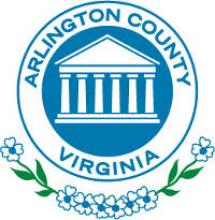
Fast, affordable Internet access for all.

When Arlington County, Virginia, decided to deploy dark fiber and make it available to businesses in 2015, officials dreamed of economic development, tech innovation, and competition in the broadband market. Four years and approximately $4 million later, the fiber network has fallen short of those lofty goals and instead lies in the ground mostly unused.
A recent investigation by the local news outlet ARLnow explores the reasons why Arlington’s network has failed to live up to expectations; ARLnow’s article takes a nuanced look into the project’s specific shortcomings. In particular, the article points to certain choices that Arlington made when designing the network and lease contract, presenting an opportunity to learn from the county’s mistakes and offering hope for the network’s future.
What Went Wrong
Arlington conceived of the 10-mile dark fiber network as an extension of the county’s existing network, ConnectArlington, which already serves schools, traffic lights, and other government buildings. County officials believed the dark fiber expansion, which businesses and Internet service providers (ISPs) could lease access to, would promote economic growth. “At the time,” ARLnow explains, “county leaders championed the construction of the ‘dark fiber’ network as a transformative step for Arlington.” One former official even described the dark fiber as a “competitive advantage over other jurisdictions.”
Unfortunately, county leaders’ “build it and they will come” attitude has not bred success, and the network is drastically underutilized at present. This failure was not inevitable, the article says, but rather “Arlington officials made a series of decisions in designing the program that scared off any businesses interested in leasing the fiber.” ARLnow quotes a member of the Broadband Advisory Committee assembled by the Arlington County Manager:
“‘They have this huge amount of fiber in the ground, and not a single strand of it has been leased,’ said Chris Rozycki, a member of the Broadband Advisory Committee that studied ConnectArlington [and CEO of Potomac Fiber]. ‘It’s like they’ve built an interstate, with no on-ramps or off-ramps.’”
Based off the work of the committee, the article identifies several reasons why ConnectArlington’s dark fiber expansion has failed to result in the economic development that officials were hoping for. One main reason is the design of middle-mile dark fiber network, which is unlit and doesn’t connect to individual buildings, making it difficult for Internet access providers and other companies to tap into the network.
Another factor is the county’s long and complicated leasing contract. ARLnow describes the document as “full of legal jargon and complex provisions — a copy of the agreement provided to ARLnow clocks in at 72 pages long — which worried some prospective customers.” Certain contract provisions also concerned potential lessees. ARLnow notes:
“The agreement also allows the county to boot ISPs off the network with just one year’s worth of notice, complicating any efforts by an ISP to sign customers to long-term deals. Rozycki said the terms of the agreement pushes so much risk on to his company that his investors threatened a revolt when he tried to sign a deal with Arlington.”
Arlington officials also identify Virginia state law, which places onerous restrictions on publicly-owned broadband networks, and other legal obligations that the county has as complicating factors, reports ARLnow.
Turning the Network Around
Although Arlington’s network has floundered since its construction four years ago, the many other publicly-owned dark fiber networks around the country prove that these kinds of projects can succeed if designed well. For example, the dark fiber network in Huntsville, Alabama, has attracted Google Fiber to the city, bringing better connectivity to residents and businesses. In California, the city of Pasadena leases dark fiber to large institutions, including local universities and a NASA laboratory, resulting in an annual revenue of nearly $500,000.
In a report, the Broadband Advisory Committee made recommendations to Arlington County on how to better use its dark fiber. ARLnow summarizes some of the suggestions:
“For its part, the committee urged the county in its report to remove the ‘poison pills’ and ‘contract traps’ in the agreement that scared away companies like Rozycki’s. The group also urged the county to rewrite the agreement ‘in plain English,’ offer longer lease terms and provide ‘adequate remedies other than contract termination’ should problems arise with the network . . . The group hopes to see the county build new laterals, offer grants to companies hoping to do the same and advertise incentives to ISPs looking to enter the market.”
The ARLnow article ends with a few quotes that point towards a potentially bright future for ConnectArlington:
“‘Getting rid of it at this point, I think, is a mistake,’ [Arlington County CIO Jack] Belcher said. ‘We have the opportunity to leverage it in so many ways as a county.’ For all their criticism, committee members agree. [Executive Director of Next Century Cities Deb] Socia says she applauds the county’s ‘willingness to look for ways to more fully utilize’ the network, instead of simply giving up . . . ‘They have the makings of something really interesting there,’ Rozycki said. ‘They just need the right people and partners to make it work.’”
Listen to Christopher and Jack Belcher discuss plans for Connect Arlington in 2014 in episode 97 of the Community Broadband Bits podcast:
